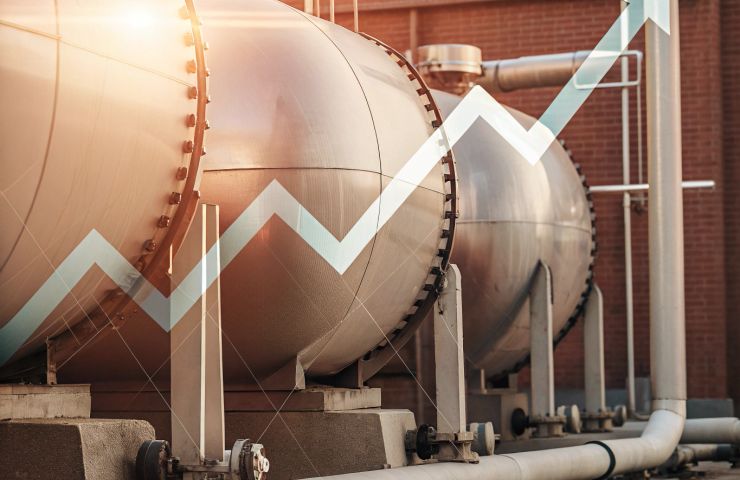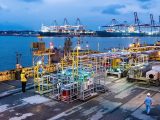
Hydrogen Production Propels Bernstein SocGen’s $518 Price Target for Linde plc
August 5, 2025On August 4, 2025, Bernstein SocGen Group’s own James Hooper gave Linde plc (NASDAQ: LIN) a little nudge, bumping his price target from $517 to $518.00 and standing by his Buy call. It might seem modest, but it underlines confidence in Linde’s knack for capitalizing on growing demand in hydrogen production and ammonia production—cornerstones of the global drive toward sustainable energy and industrial decarbonization.
Hooper’s not alone in this optimism. Charts from TipRanks, TradingView, and StreetInsider show average price targets settling between $508 and $514, with “Buy” crowding out other ratings. That small uptick tells us Linde’s near-term performance and long-term upside still look solid as a rock.
Key Insights
- Small but telling lift: Price target inches up from $517 to $518, signaling steady faith in Linde’s strategy.
- Clean ammonia & hydrogen edge: Decades of expertise in industrial gases give Linde a leg up on scaling green hydrogen and clean ammonia.
- Global reach: A network of production sites, pipelines, on-site plants and fueling stations forms a robust hydrogen infrastructure that’s hard to beat.
- Financial backbone: Consistent EPS surprises and disciplined capex spend keep the balance sheet healthy.
- Policy tailwinds: Incentives from the EU’s REPowerEU to the U.S. Inflation Reduction Act are sweetening the pot for new projects.
Hydrogen & Ammonia Technologies
Linde’s bread and butter remains scale hydrogen via steam methane reforming (SMR), but what’s really turning heads is its growing electrolyzer lineup for green hydrogen. Beyond making the gas, Linde shines at liquefaction, high-pressure storage and delivery—whether that’s through pipelines, tube trailers or on-site refueling units. Together, these pieces form the backbone of a future-proof hydrogen infrastructure, powering everything from heavy industry to long-haul transport.
On the ammonia side, Linde still runs traditional “grey” plants feeding off natural gas. But it’s plowing serious cash into green ammonia too—using electrolytic hydrogen in classic synthesis loops. The goal? Slashing lifecycle emissions so ammonia can double as a clean fertilizer and even a carbon-neutral energy carrier for turbines or ships with minimal retrofits.
Strategic & Financial Angle
Hooper’s pipeline-hugging price tweak isn’t just wishful thinking; it’s grounded in Linde’s track record. Their capex game zeroes in on next-gen electrolyzers, catalyst R&D and digital monitoring tools. Net debt to EBITDA stays within investment-grade territory, so financing future builds should be a breeze.
Ever since Linde AG and Praxair merged in 2018, the combo of German engineering smarts and U.S. scale has paid dividends. Bulk buying power, optimized logistics and joint R&D ventures let Linde lock down long-term offtake deals with renewable players—spreading risk and guaranteeing volume.
Market & Policy Context
Governments aren’t sitting on their hands. Europe’s carbon border adjustment mechanism (CBAM) and green targets are fast-tracking hydrogen uptake, while U.S. tax credits under the Inflation Reduction Act are carving out attractive margins for low-carbon hydrogen projects. Meanwhile, Japan and South Korea are rolling out subsidy schemes for imported green ammonia, anchoring themselves as key buyers.
Standards bodies—think ISO TC197 for hydrogen and TC 158 for ammonia—are getting their acts together, laying the rails for cross-border trade. At the same time, debates over grid readiness, permitting streamlining and carbon pricing are heating up from Brussels to Canberra, shaping the next wave of announcements.
Competitive Landscape
It’s no walk in the park. Air Liquide is beefing up its decarbonization services, Air Products is rolling out fueling hubs, and Mitsubishi is flexing its engineering muscles in the Asia-Pacific. What sets Linde apart? It’s the full-stack approach—from gas production to digital twin software that squeezes out downtime and boosts efficiency.
Perspective
If you’re hunting for exposure to industrial decarbonization and clean energy transitions, Linde is your go-to. Its hydrogen and ammonia wings dovetail nicely with net-zero roadmaps. Of course, scale-up challenges, renewable power availability and off-taker appetite are real risks. Keeping an eye on Linde’s project backlog, policy wins and how fast electrolyzer costs fall will be key to spotting the next leg up.
On the flip side, macro headwinds like inflation, logjammed supply chains and geopolitical flare-ups could test timetables and margins. Still, Linde’s long-term contracts and diverse revenue streams act like shock absorbers, turning potential bumps into entry points for savvy investors.
Historical Context
Linde’s story kicks off in 1879, when Carl von Linde cracked the code on commercial refrigeration. Fast-forward a century, and Linde AG was a pioneer in industrial gas separation—supplying oxygen and nitrogen to steel mills, chemical factories and even NASA’s space missions. In 2006, Praxair spun out of Union Carbide’s gas arm, then grew into America’s top gas supplier. Their 2018 merger created Linde plc, a powerhouse marrying German precision with U.S. scale, now the world’s biggest industrial gas concern.
Today, Linde’s in over 100 countries, with revenue streams spanning core gases, engineering services and a rapidly expanding clean energy portfolio. That century-plus heritage of innovation is now fueling moves into hydrogen fuel cells, hydrogen storage and advanced ammonia synthesis—key pieces for a low-carbon future.
Collateral Impacts
Linde’s headlong push into hydrogen and ammonia isn’t happening in a vacuum; it’s set to ripple across industries:
- Transportation: As supply scales, hydrogen fuel cell trucks and ships could hit cost parity sooner than we think.
- Agriculture: Clean ammonia can decarbonize fertilizers, shrinking the carbon footprint of food production.
- Power & Utilities: Co-firing ammonia in turbines or standalone plants offers new grid balancing and storage options.
- Industry consolidation: Smaller gas outfits might struggle to keep pace, nudging the sector toward more tie-ups.
- Regulatory shifts: Safety rules, certification schemes and trade frameworks will need an overhaul to handle growing hydrogen and ammonia flows.
Investor Considerations
Portfolio managers and energy-savvy investors should zero in on a few key metrics:
- The makeup and total value of Linde’s hydrogen and ammonia order book.
- How many offtake agreements are inked with renewables developers and big industrials.
- Capex plans for the latest electrolyzers and any carbon capture tie-ins.
- Growth in digital services revenue—from remote monitoring to predictive maintenance.
- Regulatory approvals across major markets like the EU, U.S., Japan and Australia.
Watch how peers of James Hooper—over at Bernstein, SocGen and beyond—adjust their numbers. Their moves could give you a read on shifting market sentiment.
Closing Insight
That $1 bump—from $517 to $518—might look trivial, but it’s a nod to the bedrock of Linde’s growth story. As hydrogen production and clean ammonia step out of pilot phase into real-world applications, companies with proven delivery chops are set to capture the lion’s share. Linde’s legacy of over a century combined with its push into sustainable energy makes it a stock worth watching at the crossroads of traditional industrial gases and tomorrow’s zero-emission tech.
About the Company
Linde plc is a global leader in industrial gases and engineering, based in Ireland with operational headquarters in the UK. Born from the 2018 merger of Linde AG (established 1879) and Praxair (1907), it delivers gases, applications and services to sectors including chemicals, energy, manufacturing, electronics and healthcare. Today, Linde is spearheading the shift toward sustainable energy with a focus on industrial decarbonization through advanced hydrogen and ammonia solutions.



 With over 15 years of reporting hydrogen news, we are your premier source for the latest updates and insights in hydrogen and renewable energy.
With over 15 years of reporting hydrogen news, we are your premier source for the latest updates and insights in hydrogen and renewable energy.